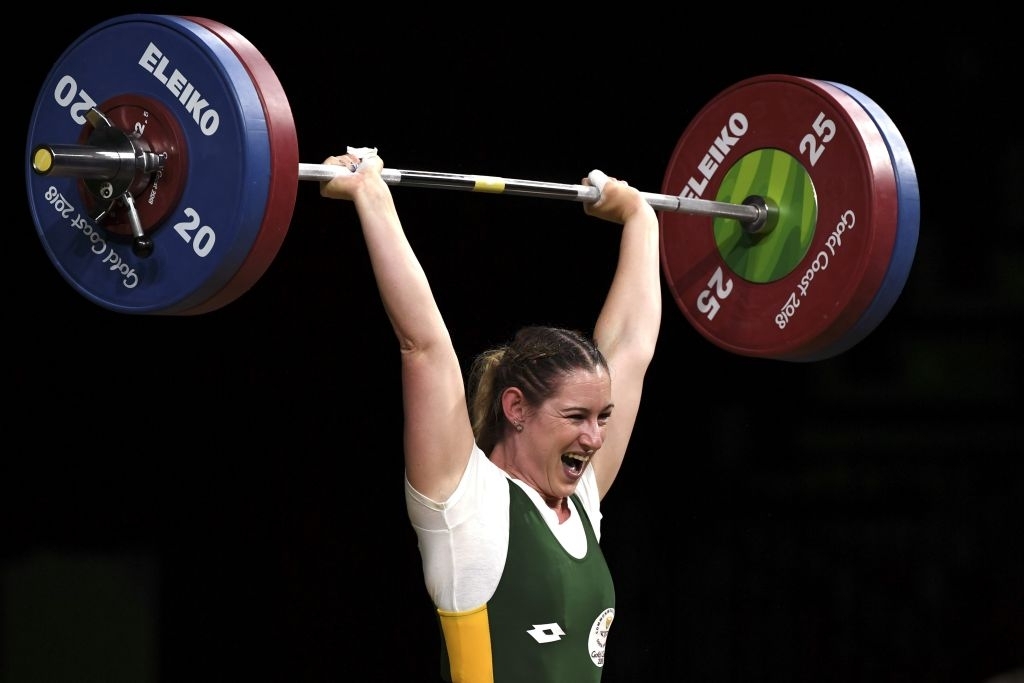As an avid Weightlifter, you’ve probably seen clean pulls performed a number of different ways. With straight arms, bent arms, or re-bending the knees under the bar. Turns out, these are all different exercises and don’t all fall under the clean pull umbrella.
The clean high pull is the same as a clean pull except you will pull the bar to chest height with your arms at the end of the second pull. Think of it as an upright row type movement with momentum from your legs.
So let’s run through exactly how to perform the clean high pull to maximize its transfer to your clean for a big Weightlifting total.
Table of Contents
How To Perform The Clean High Pull
Starting Position
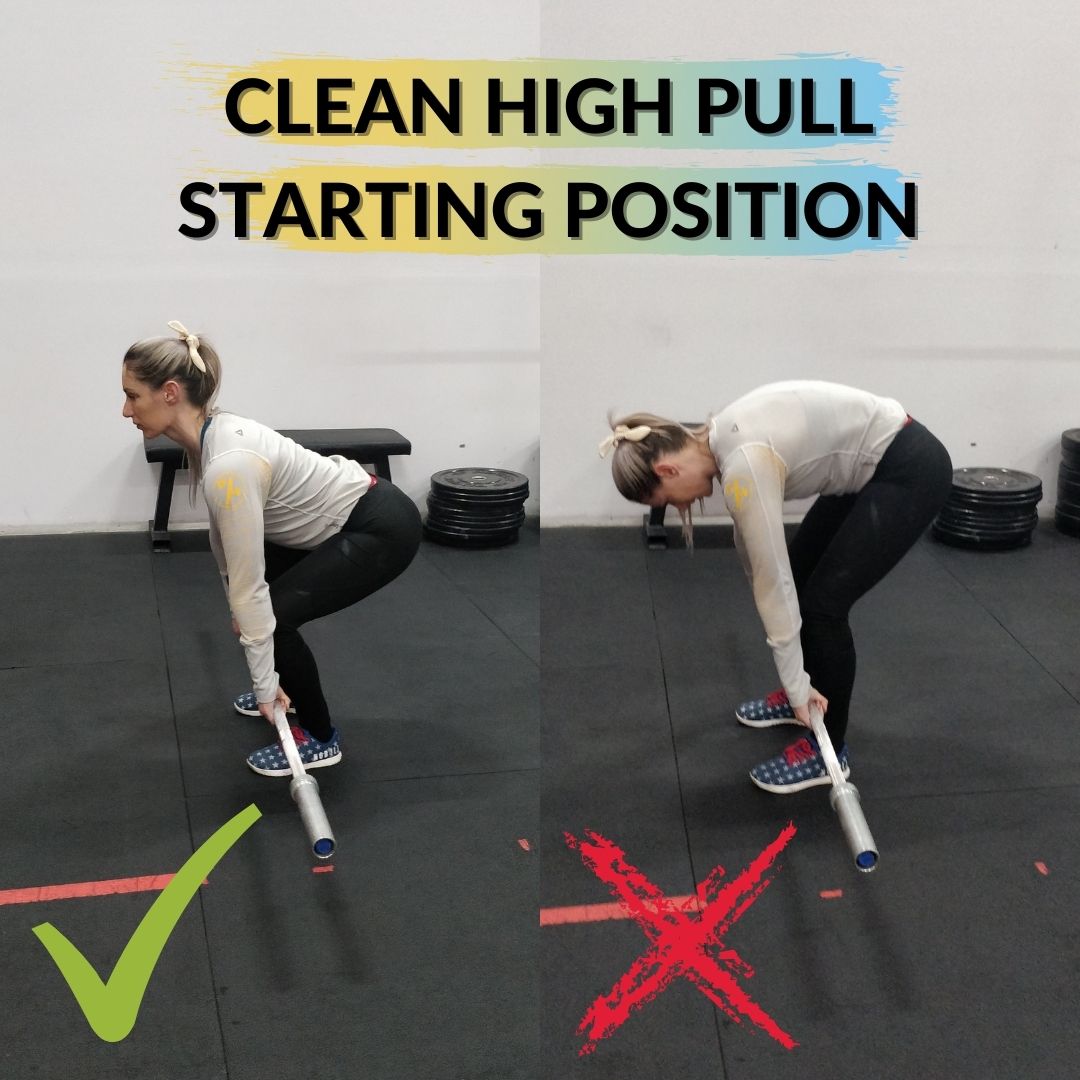
The starting position of the clean high pull is the same as your clean pull or clean. That is your bodyweight positioned through the middle of your foot, your chest up, elbows pointing out, and your head and eyes forward and slightly up.
To find this position, pull yourself down to the bar by pulling the slack out of the bar. This is important as the barbell moves slightly before the plates come off the floor. If you don’t take this slack out of the bar, when you go to pull, you’ll lose your position and tightness.
By pulling the slack out of the bar, you create tension with your full body and especially your lats. Keeping your lats tight by imagining you’re holding tennis balls under your armpits will keep the bar close as you initiate the pull.
In this position, the barbell should be touching your shins or be very, very close. If the bar is even an inch away from your shins, your pull will not be straight and you will struggle to find the correct positions. Additionally, the further the bar is from your shins, the more stress you place on your lower back.
The Pull
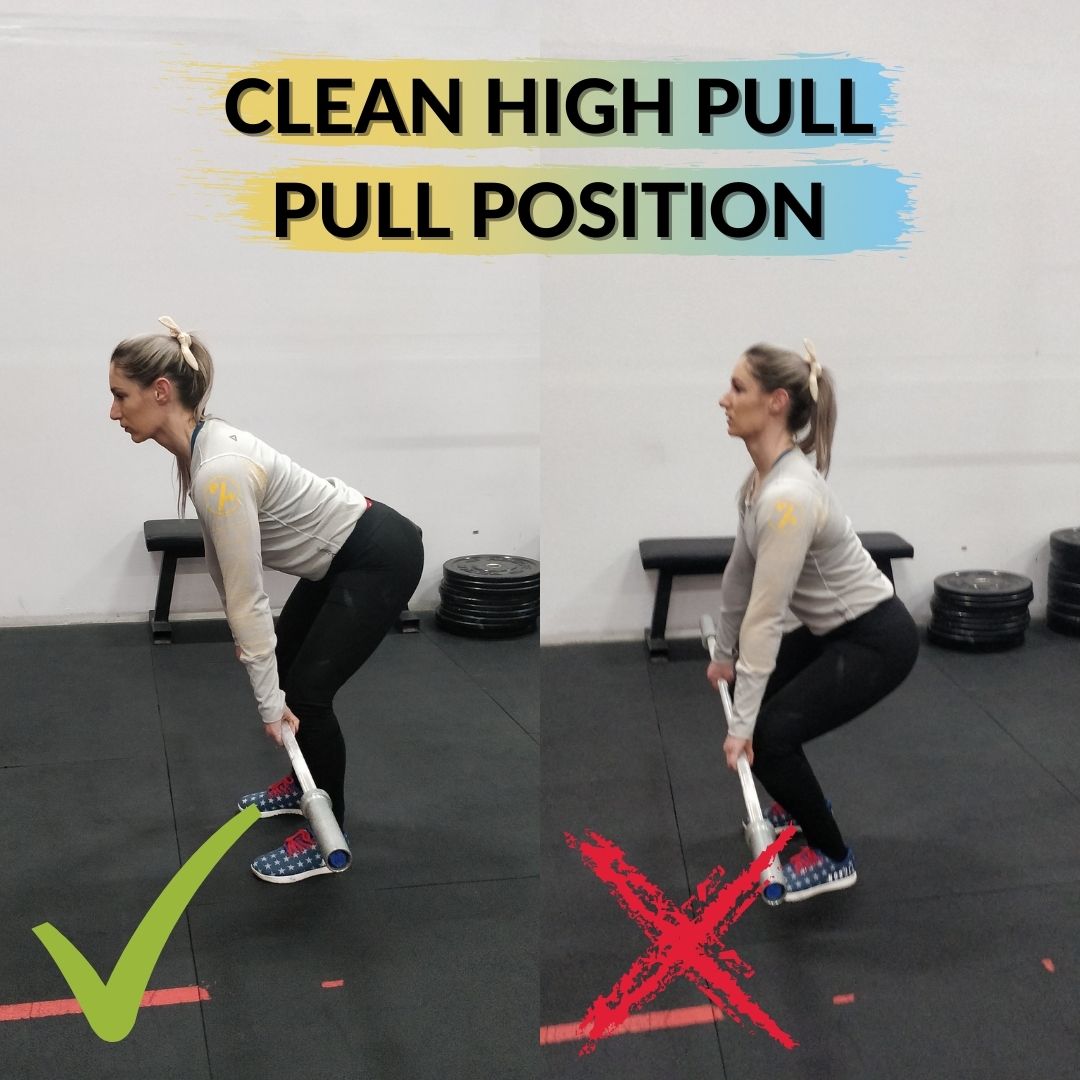
To start the pull, push with your legs. This will ensure you maintain the same back angle from the floor until the bar is past your knees. That means your hips and shoulders rise at the same time. Pull your knees slightly back to make room for the vertical bar path.
Stay over the bar as long as possible before bringing the hips forward whilst still driving with your legs to full extension (ankle, knees, and hips).
This should be aggressive and your goal is to accelerate the bar faster than it was moving from the floor to your knees.
The barbell will brush up your mid to high part of your thighs or even make contact with the hip for some Weightlifters.
The Finish
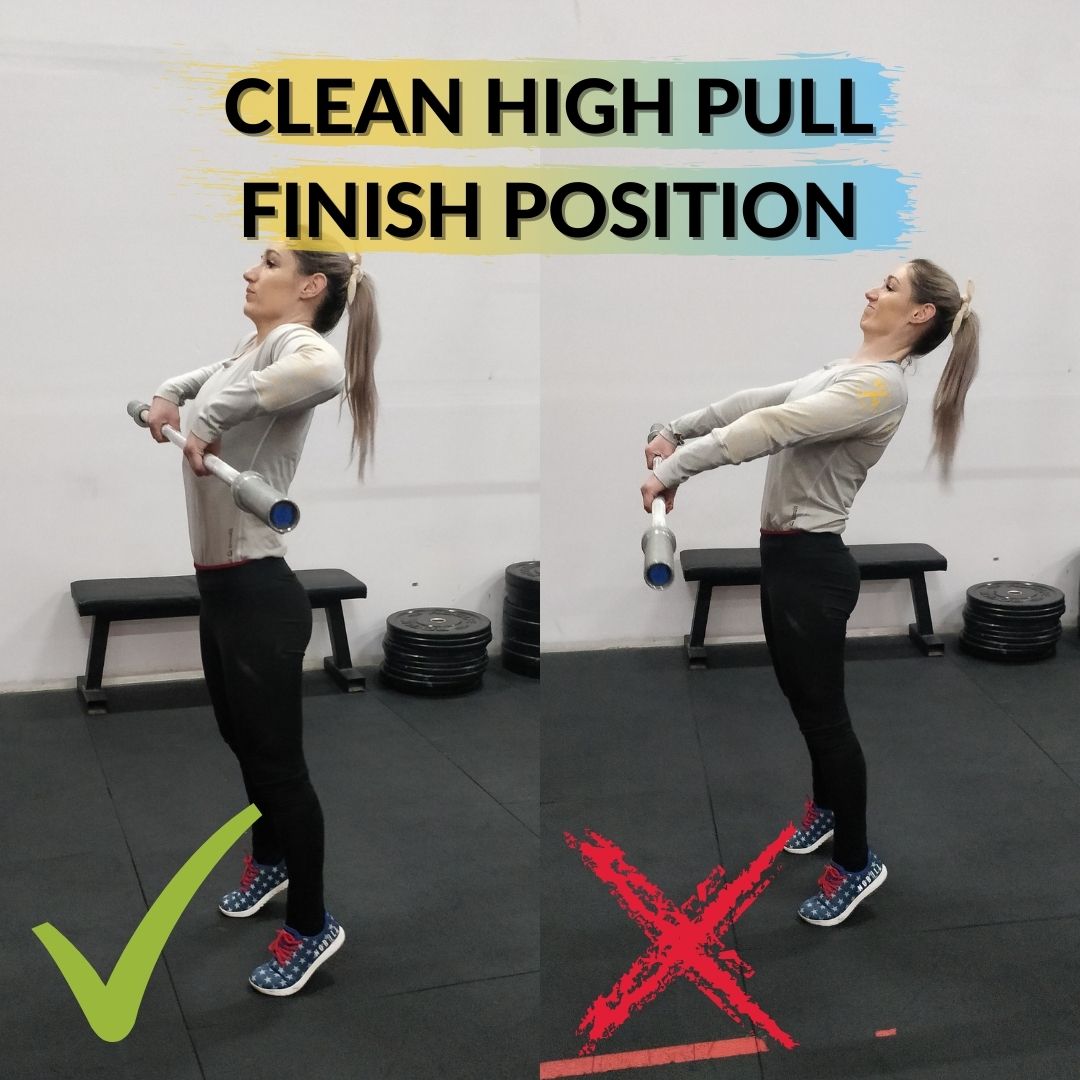
As you make contact with the barbell, continue pushing with the legs as you extend up tall. Perform a big shrug with your traps. As you shrug, pull the bar as high as possible with your arms like you are performing an upright row.
You should be fully extended onto your toes as you pull the bar to get maximum momentum from the legs. Your elbows should be pointing up and back and the bar close to your body.
Common Clean High Pull Mistakes
The clean high pull is not an easy movement. Here are some of the common mistakes made by beginner and experienced lifters.
Setting Up For A Deadlift
While the starting position of the clean high pull and deadlift may look similar, it is far from it. That is why I have a detailed article comparing the clean pull vs. the deadlift. The deadlift allows you to have a slightly rounded upper back when handling heavy loads. Doing this with a clean high pull will force you to cut the pull short.
Secondly, the setup for a deadlift is more toward the heels. This places you behind the barbell which is great for picking up heavy loads to lockout at the hips. But the goal of the clean high pull is to be able to propel the barbell vertically so you need to be over the bar to achieve this goal.
Shoulders Rising Faster Than The Hips
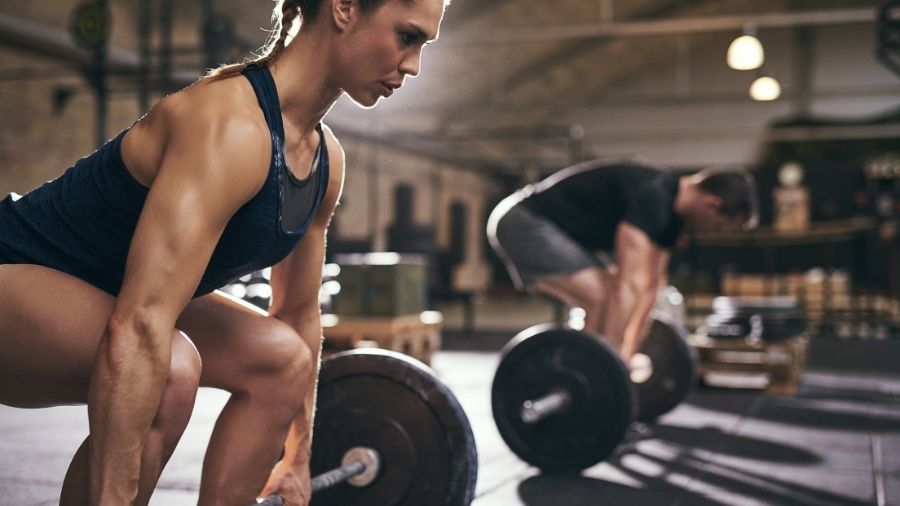
This is a symptom of setting up for a deadlift. The goal of the deadlift is to bring the hips through as fast and as early as possible. The clean high pull demands the exact opposite where you want to delay the shoulders rising and hips coming forward for as long as possible.
When the shoulders rise too quickly, you are now behind the bar. The only way to continue the upward momentum is to lean back further which forces the barbell to loop away from the body after contact.
Bouncing The Bar Off The Thighs
This is a common beginner mistake with the clean high pull. Instead of the bar brushing up the thighs and moving vertically, it gets bumped forward in a reverse curl motion. This is often caused by the technical mistakes presented above, or the elbows not being pointed out to the side.
Pointing the elbows out means when they bend, the bar moves vertically. When your elbows point backward like a regular deadlift, when they bend the bar moves in a looping reverse curl motion.
Bending The Arms Early
The arms should be like ropes during the pull. They just connect the barbell do your body. Too much tension in the arms causes the arms to bend early resulting in severe losses of upward momentum and power. You can’t perform a high pull if you’re already pulling. The arms are already bent!
Re-bending The Knees
The clean high pull finishes with straight legs in triple extension (ankles, knees, and hips fully extended). When the knees re-bend, you either cut the pull short or it is a completely different exercise known as the Panda pull.
Clean High Pull Benefits
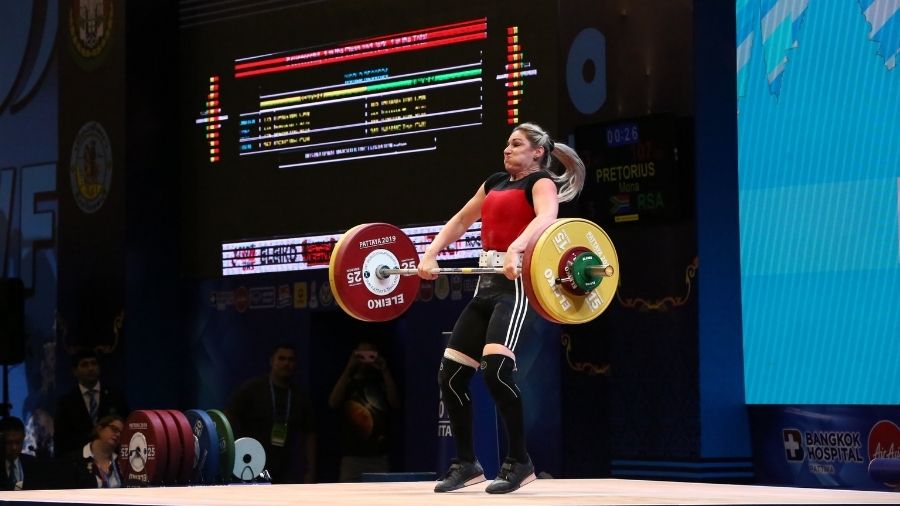
Reinforces Full Extension Of The Pull
One of the main benefits of the clean high pull is that if you don’t fully extend for the finish, you literally cannot high pull the bar. If you don’t complete the pull, your high pull will be belly button height only instead of chest height.
If you pull backward instead of vertically, your high pull also won’t get very high. This is a great feedback mechanism for correcting the pull to transfer to the clean.
Teach The Correct Bar Path
Additionally, your positioning will affect the bar path. When you get everything right, you will be able to pull the bar to chest height. When you get it wrong, body positioning and bar path are often the culprits.
Specific Strength Exercise For The Clean
If we work along the force-velocity curve of exercises, we see that the from fastest to slowest the exercises go:
We are essentially getting close to power clean speeds but being able to load the exercise heavier. It would fall under the strength-speed category of exercise. With loads slightly heavier than the power clean, we can transfer the strength built at similar speeds to the clean.
Enhance Lower Body Power
A key physical attribute for Weightlifting is a powerful lower body. While the classical Olympic lifts do a good job of this, training over the entire force-velocity spectrum is important to maximize lower body power production since power is the product of force and velocity.
Which Muscles Does The Clean High Pull Work?
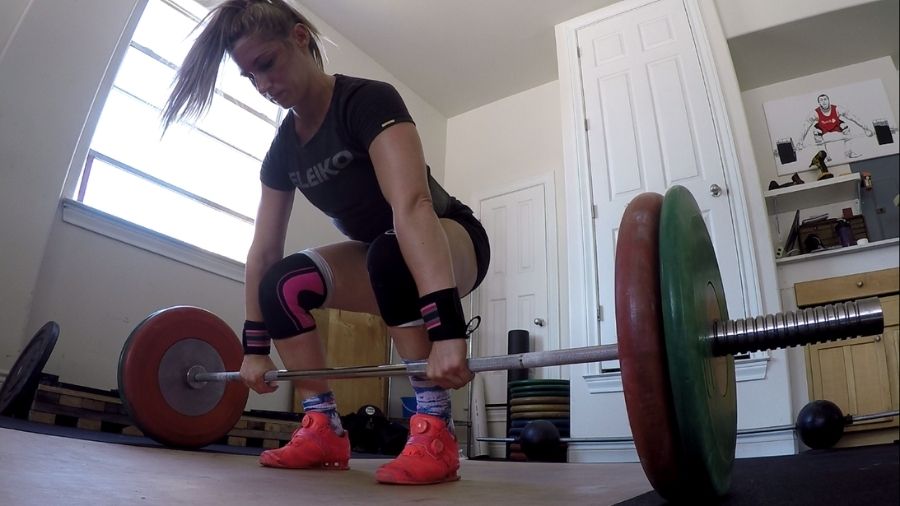
The muscles worked during the clean high pull are the entire leg musculature (quads, hamstrings, glutes, and calves) as well as many of the upper body muscles including the back, traps, shoulders, and biceps. It really is a full body exercise that works most muscles except for the upper body pressing muscles.
When To Use The Clean High Pull?
The clean high pull can be used by beginner Weightlifters to reinforce the bar path and body positioning during the clean. Doing this treats the exercise as a regression to the clean as the Weightlifter doesn’t need to worry about the catch so they can focus on the pull.
Beginners may also use the clean high pull within a Weightlifting complex to carry over the feeling of the correct movement to the power clean or clean. For example, clean high pull + power clean.
For intermediate to advanced Weightlifters, the clean high pull will be used as an accessory exercise for the clean after performing cleans or power cleans.
How Many Sets And Reps Of The Clean High Pull?
Generally, you will perform 4-6 sets of 3-5 reps at approximately 65-80% of your clean 1RM. This is much lighter than your traditional clean pull as the focus is on the speed of movement. Not so much on heavy loading.
Clean High Pull vs. Power Clean
The main difference between the clean high pull and power clean is the catch. The clean high pull removes the catch phase from the exercise. This is great for those learning the lift to get a feel for the correct bar path.
It’s also great for non-Weightlifting athletes who want the benefits of high force and power production without the need for learning more technical parts of the exercise or needing front rack mobility.
Clean High Pull vs. Clean Pull
These terms are often used interchangeably but shouldn’t be. The clean pull involves a violent shrug without the pulling of the arms at the top of the pull.
The clean high pull also involves a violent shrug but also pulling the bar with the arms bringing the bar to approximately chest height.
Essentially, the clean high pull brings the bar much higher than the clean pull.
Clean High Pull Variations
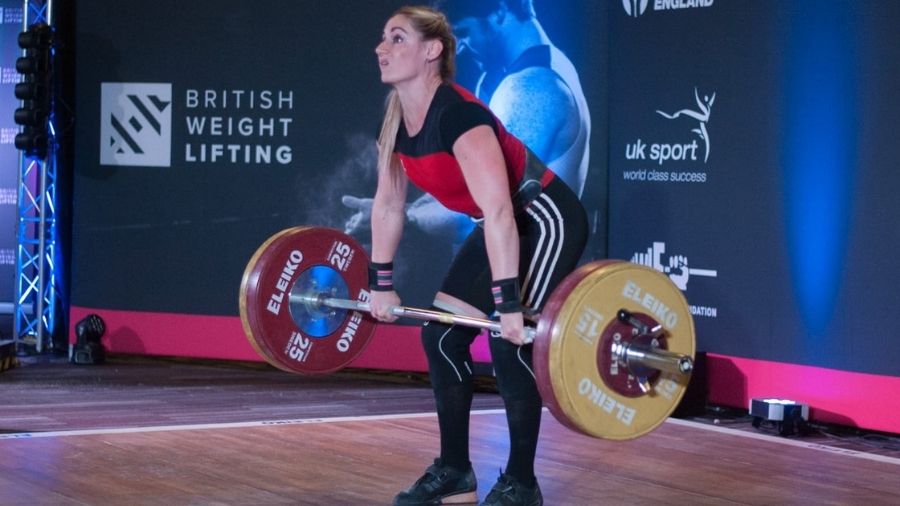
Here are some of the most common clean high pull variations.
Clean High Pull From Hang
While the hang clean high pull isn’t commonly used within the sport of Weightlifting, it is a very common exercise within sports performance. And for good reason.
The hang clean high pull has been shown to produce greater peak power than the hang power clean at 40, 60, and 70% of hang power clean 1RM with no differences between 80 - 100% 1RM [1].
Further, they are just as effective as loaded trap bar squat jumps for improving jump height, peak power, peak force, and the ability to produce force in a short time period [2]. You can perform the clean high pull from the high hang (closer to the hips) or the hang (just above the knees).
I prefer to teach these movements without a countermovement. That is, lower the bar to the hang position and pause for 1-2 seconds to develop the strength in that position. The countermovement can be used by more advanced Weightlifters looking to maximize speed and power.
Clean High Pull From Blocks
The clean high pull from the blocks reduces the stress on the lower back and legs as there is no eccentric or lowering component. The exercise becomes more of a starting strength exercise having to accelerate the bar from a dead stop position.
Clean High Pull From Riser
By standing on a riser (also known as platform or elevated) you lengthen the pull. This forces the Weightlifter to stay over the bar longer than usual. The idea is that this feeling can be carried over to the clean so the lifter stays over the bar instead of positioning themselves behind the bar too early.
Clean High Pull With Pause
Pauses can also be worked into the clean high pull for variation. For example, pausing below and above the knee during the pull can develop isometric strength in these positions while reinforcing the correct positions.
References
1. Takei, S., Hirayama, K., & Okada, J. (2021). Comparison of the power output between the hang power clean and hang high pull across a wide range of loads in weightlifters. The Journal of Strength & Conditioning Research, 35, S84-S88.
2. Oranchuk, D. J., Robinson, T. L., Switaj, Z. J., & Drinkwater, E. J. (2019). Comparison of the hang high pull and loaded jump squat for the development of vertical jump and isometric force-time characteristics. The Journal of Strength & Conditioning Research, 33(1), 17-24.

